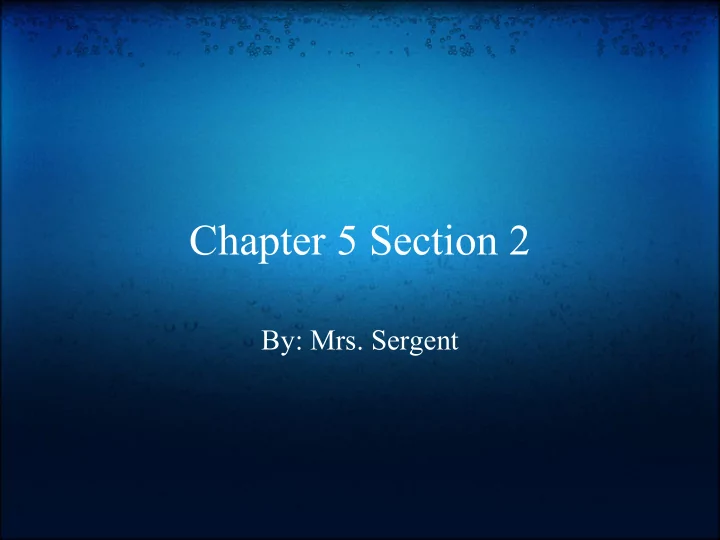

Chapter 5 Section 2 By: Mrs. Sergent
To Get You Thinking What would the "fossil record" of your life look like 2,000 years from now?
Fossilized Organisms The remains or physical evidence of an organism preserved by geologic processes is called a fossil . Fossils are most often preserved in sedimentary rock , but can be preserved in other materials. Sometimes organisms die and are quickly buried by sediment .
This sediment slows their rate of decay . Hard parts of organisms, such as shells and bones, are more resistant to decay than soft tissues . So, when sediments become rock, the hard parts of animals are preserved more often than soft tissues. Hardened tree sap is called amber .
Organisms become fossilized in amber when sap covers the insect and quickly hardens . Petrifaction is a process in which minerals replace an organism's tissues. Permineralization , a form of petrifaction, is a process in which the pore space in an organism's hard tissue is filled up with minerals.
Replacement , another form of petrifaction, is a process in which minerals completely replace the tissues of an organism. Organisms can also be preserved in asphalt when it wells up and forms thick, sticky pools at Earth's surface. Organisms can also be frozen , because cold temperatures slow down decay, and freeze the animal, preserving it.
Other Types of Fossils Any naturally preserved evidence of animal activity is called a trace fossil . Types of Trace Fossils: 1. Tracks : Form when animal footprints fill with sediment and are preserved in rock. 2. Burrows : shelters made by animals that bury themselves in sediment. These are preserved when they fill with sediment and are buried quickly.
3. Coprolite : Preserved animal dung. A cavity in rock where a plant or animal was buried is called a mold . An object that is created when sediment fills a mold and becomes a rock is called a cast . A cast shows what the outside of the organism looked like.
Using Fossils to Interpret the Past The fossil record offers only a rough sketch of the history of life on Earth. *Some parts are more complete than others* The fossil record reveals a history of environmental change . Scientists can use the fossils of plants and land animals to reconstruct past climates .
Scientists study the relationships between fossils to interpret how life has changed over time. *The organisms found in older rock layers often differ from the organisms found in younger rock layers.*
Using Fossils to Date Rocks Fossils of organisms that lived for a relatively short, well-defined geologic tie span are called index fossils .
Index Fossils: 1. Only appear in certain layers of rock. 2. By dating the rock layers above and below these fossils, scientists can determine the time span in which the organisms that formed the fossils lived. 3. only show up in a limited range of rock layers. (Due to the fact that they existed for only a short period of time.)
4. Must be found in rock layers throughout the world .
Exit Questions Describe one of the five ways in which different types of fossils form.
Homework P. 139 2-7 & 10
Recommend
More recommend